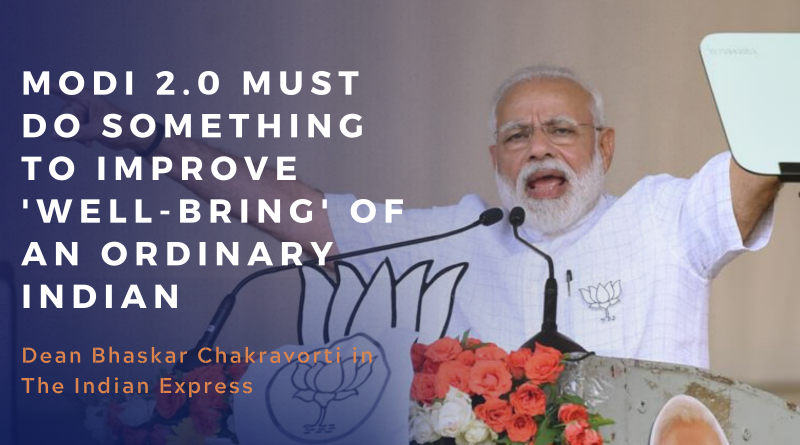Modi 2.0 Must Do Something to Improve “Well-Being” of an Ordinary Indian
The state of well-being of the ordinary Indian is far from ideal. Supporting this claim is Gallup’s 2019 World Report, which ranked India the lowest of 150 countries in terms of well-being. In 2017, only 3% of Indians reported they were “thriving”. This statistic shows a dramatic decrease from 2014, when the response represented 14% of the population.
Narendra Modi’s thunderous reelection has ushered in a new era of economic prosperity, but while economic growth is important to Indian people, it is just a small piece of a much broader, complicated puzzle. In order to bolster national well-being, this new era– “Modi 2.0”– must hone-in on familial cohesion and healthcare, while brainstorming ways to flesh-out the smaller issues that affect an individual’s daily life.
To find out more on how Modi’s administration can improve the quality of life in India, read Dean Chakravorti’s article here.

